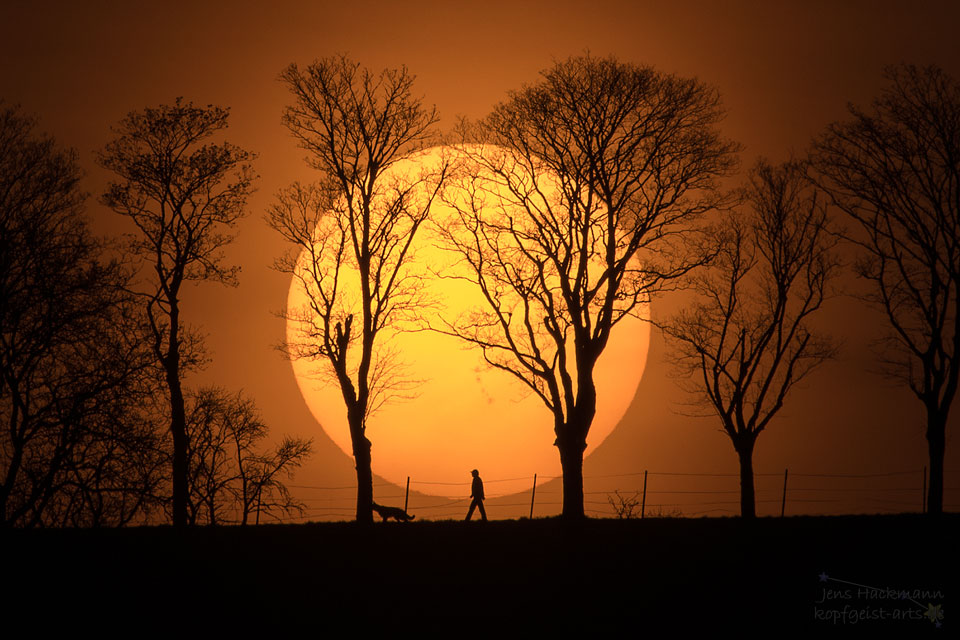Man, Dog, Sun
12 April 2017 – I got hooked on space photography when I was a kid. My mother had bought me a subscription to National Geographic magazine when I was 10 years old. At the time the magazine had just begun a collection that contained a selection of content from the National Aeronautics and Space Administration. They began publishing select photos in each issue, usually at the back of the magazine. My Mom’s sister lived in Florida and they arranged through a friend of a friend of a friend to get me a tour of the photography facilities at Cape Canaveral, years before there was a “Space Center Visitor Complex”. I still have the photos I took … on my Kodak Brownie.
Today, NASA’s image libraries consolidate imagery spread across 60 collections into one searchable location. It is the largest series of collections of its kind in the world. Several allow users to embed content … “Astronomy Picture of the Day” is one. Called “APOD” amongst followers, each day a different image or photograph of our universe is featured, along with a brief explanation written by a professional astronomer. I post quite a few on my Twitter and Facebook accounts.
The cool thing is users can embed content in their own sites and choose from multiple resolutions, including the original size, to download. Users can see the metadata associated with images, including EXIF/camera data on many images.
The above image “Man, Dog, Sun” was shot by Jens Hackmann, a fabulous “astro photog” who has contributed many shots to the APOD collection. This was supposed to be a shot of trees in front of a setting Sun. Sometimes, though, the unexpected can be photogenic. During some planning shots, a man walking his dog unexpectedly crossed the ridge. The result was so striking that, after cropping, Jens made it the main shot. And the reason the Sun appears so large is that the image was taken from about a kilometer away through a telephoto lens. Scattering of blue light by the Earth’s atmosphere makes the bottom of the Sun appear slightly more red that the top. Also, if you look closely at the Sun, just above the man’s head, a large group of sunspots is visible.
The image was taken in Bad Mergentheim, Germany.
